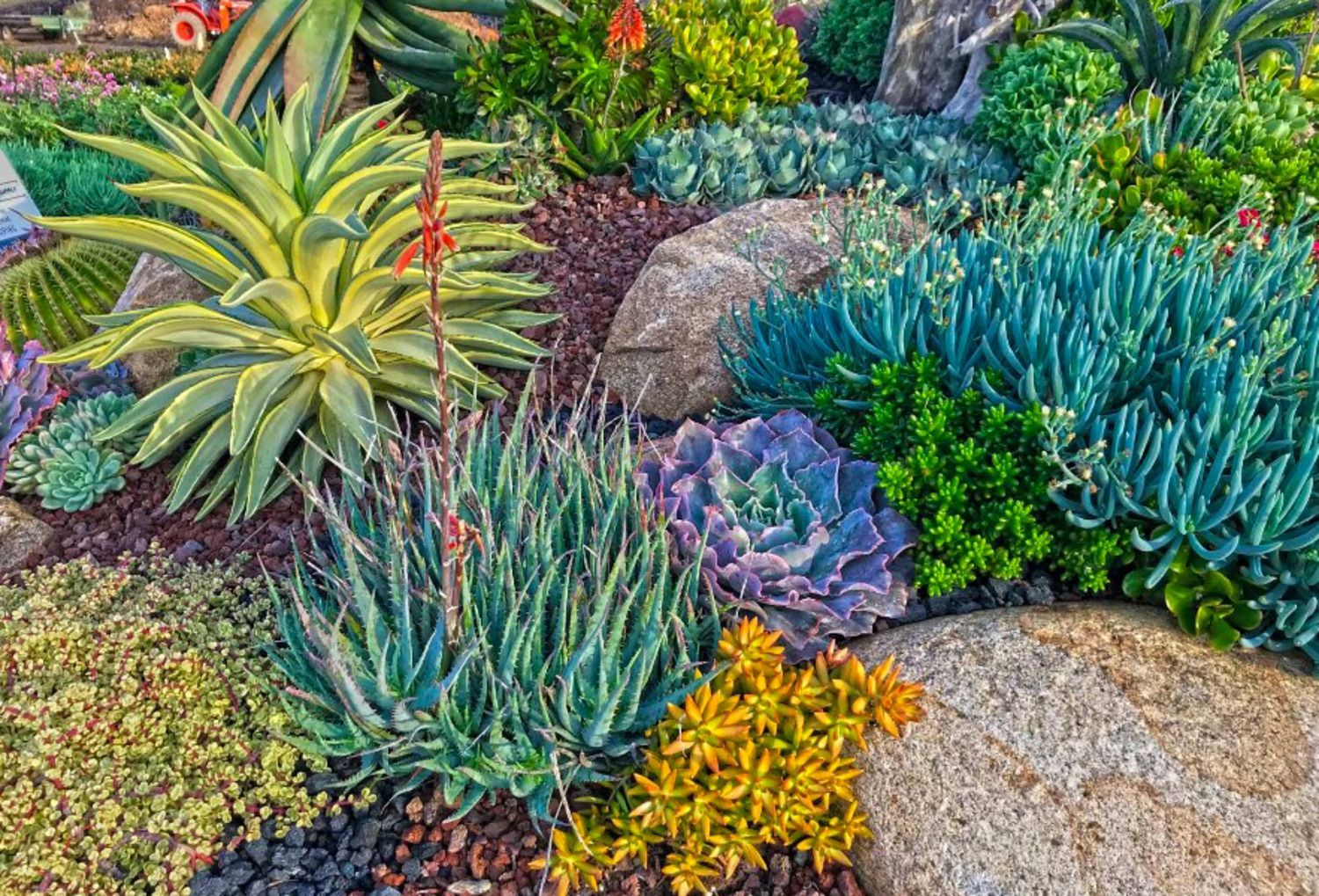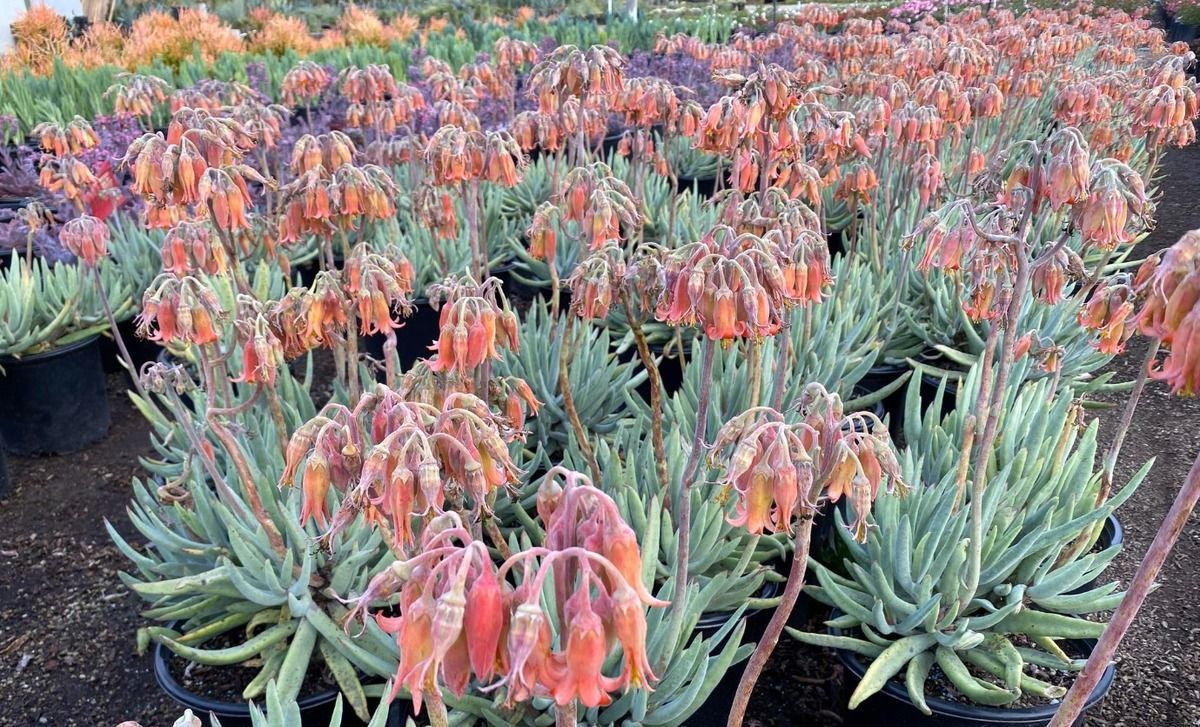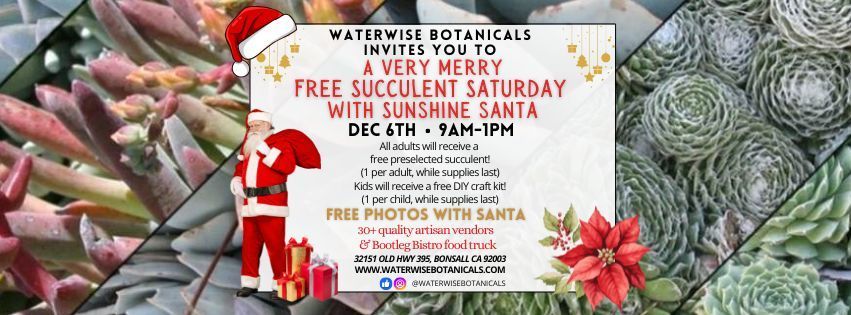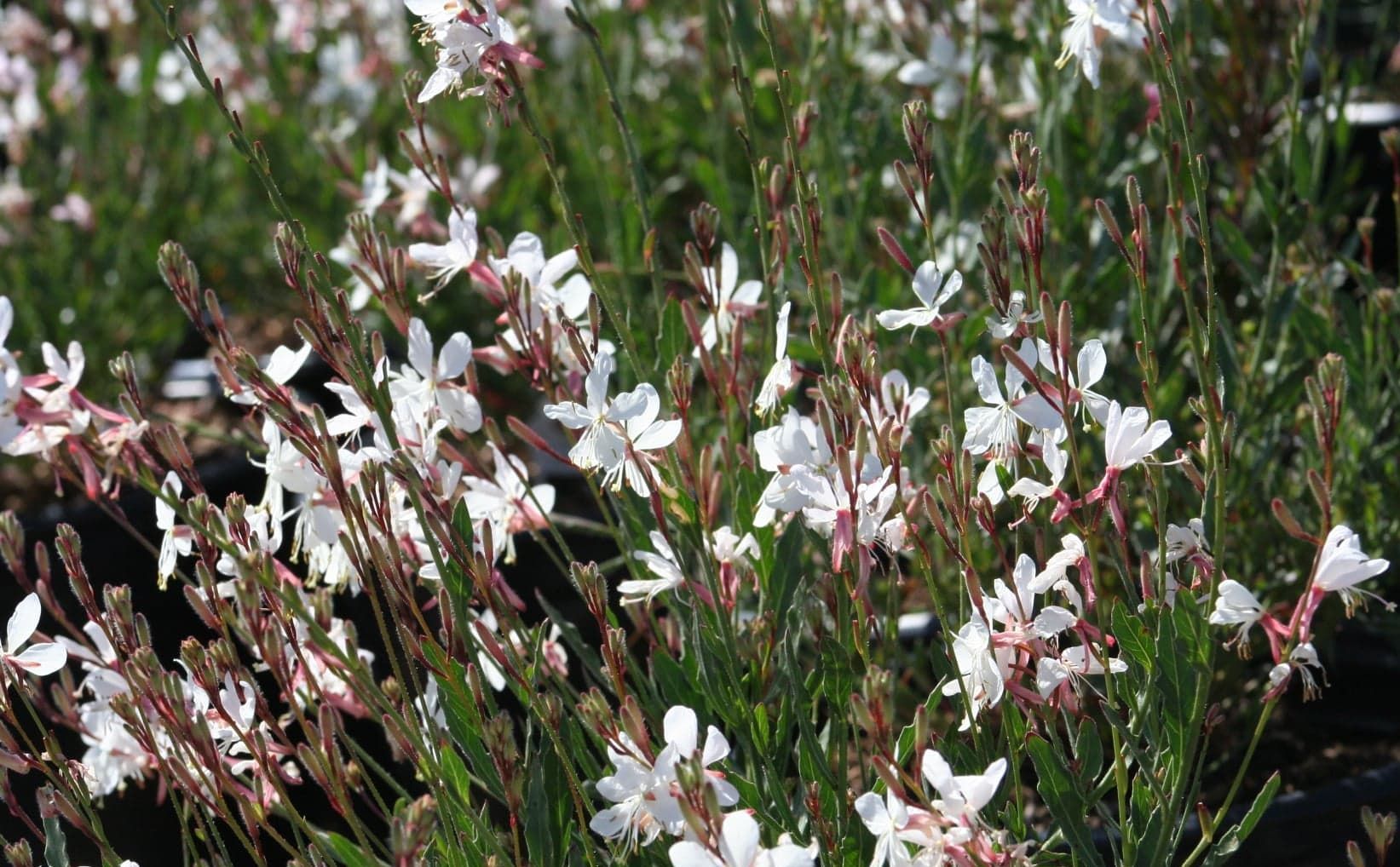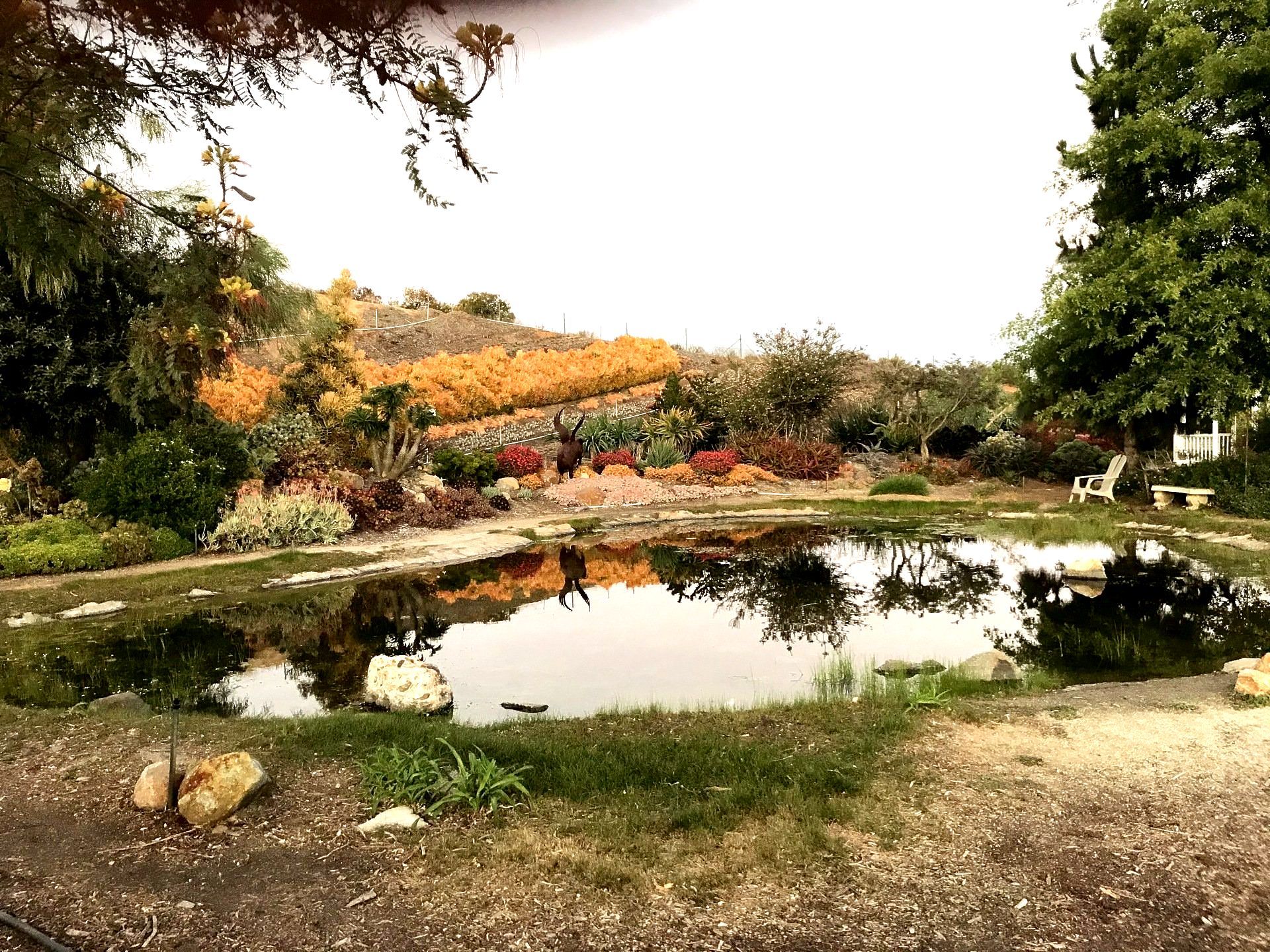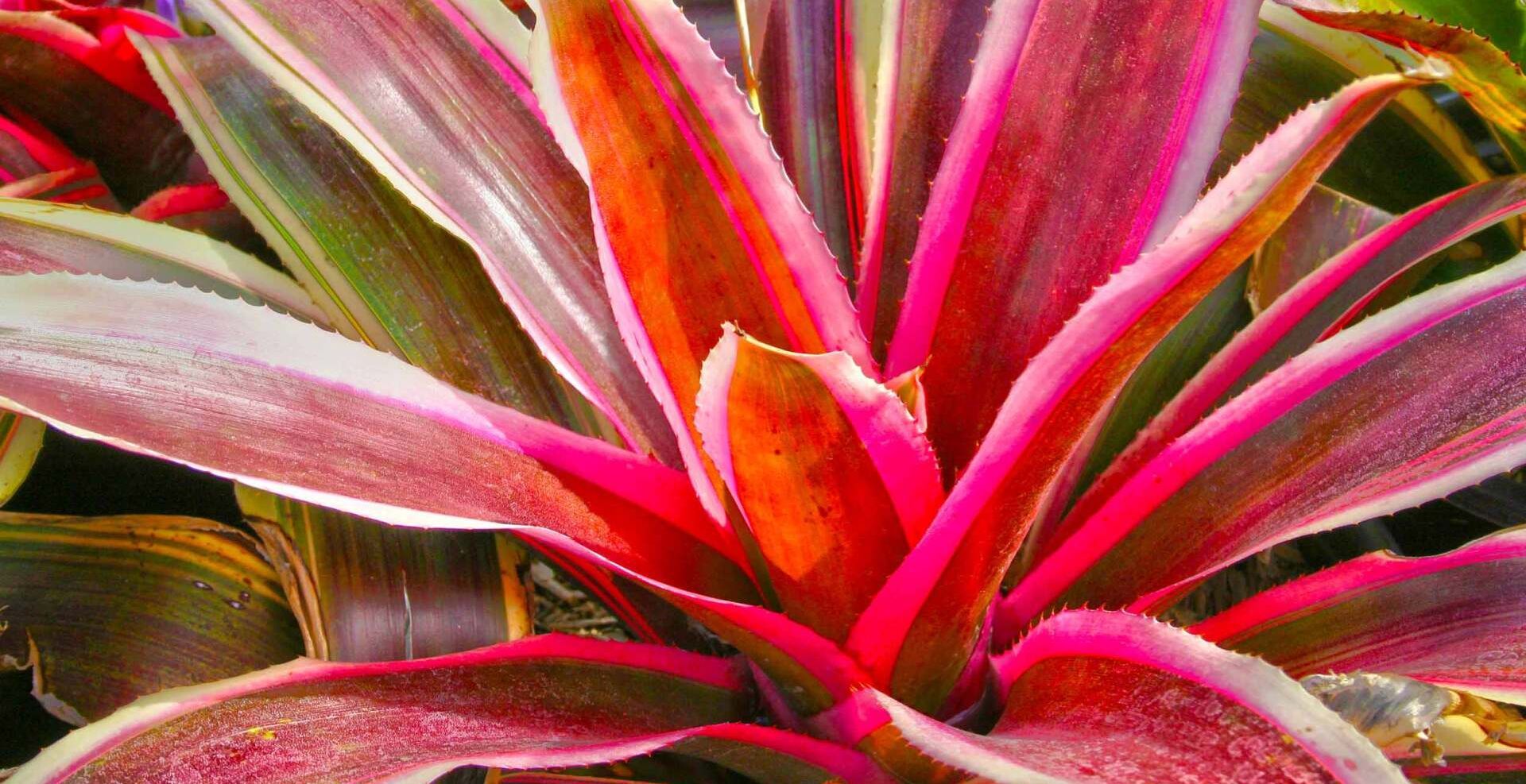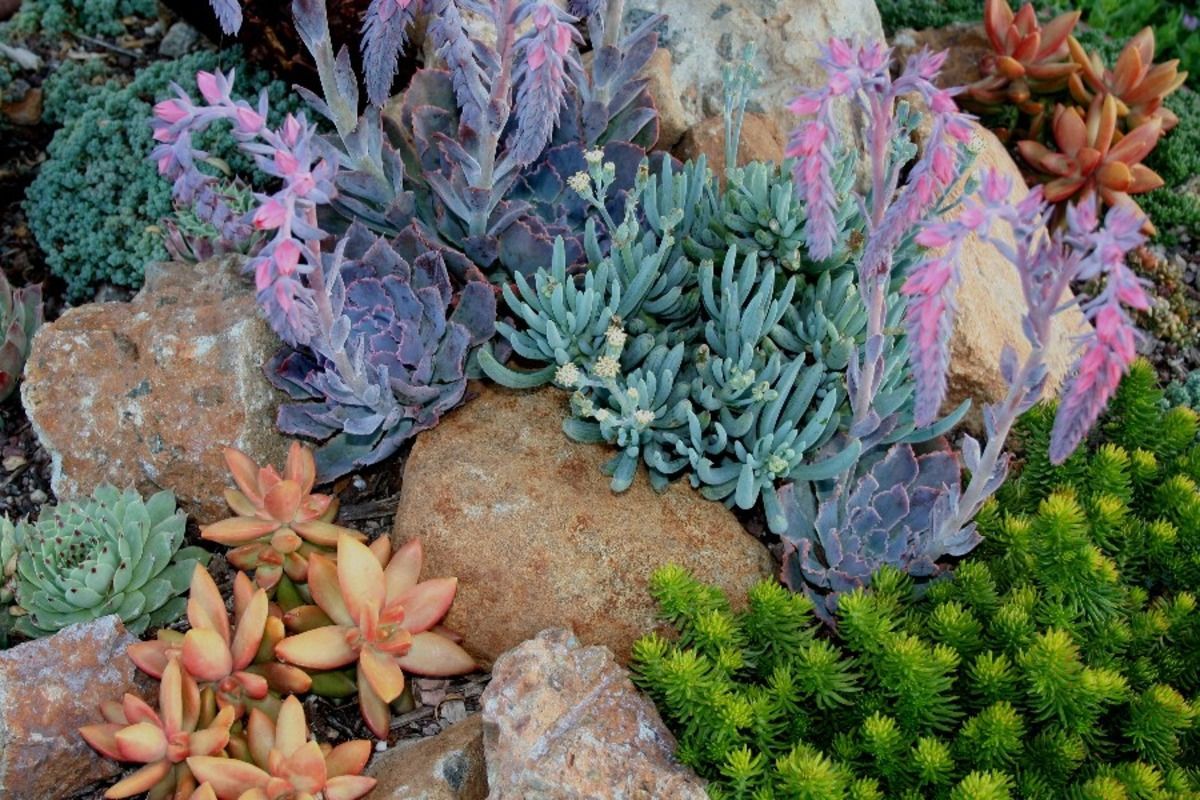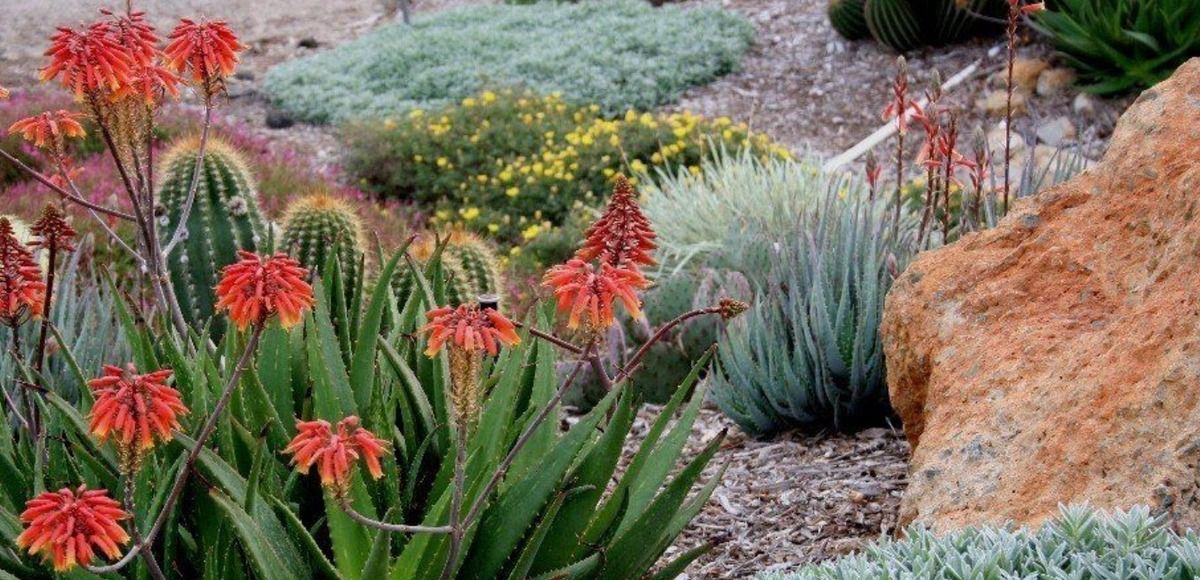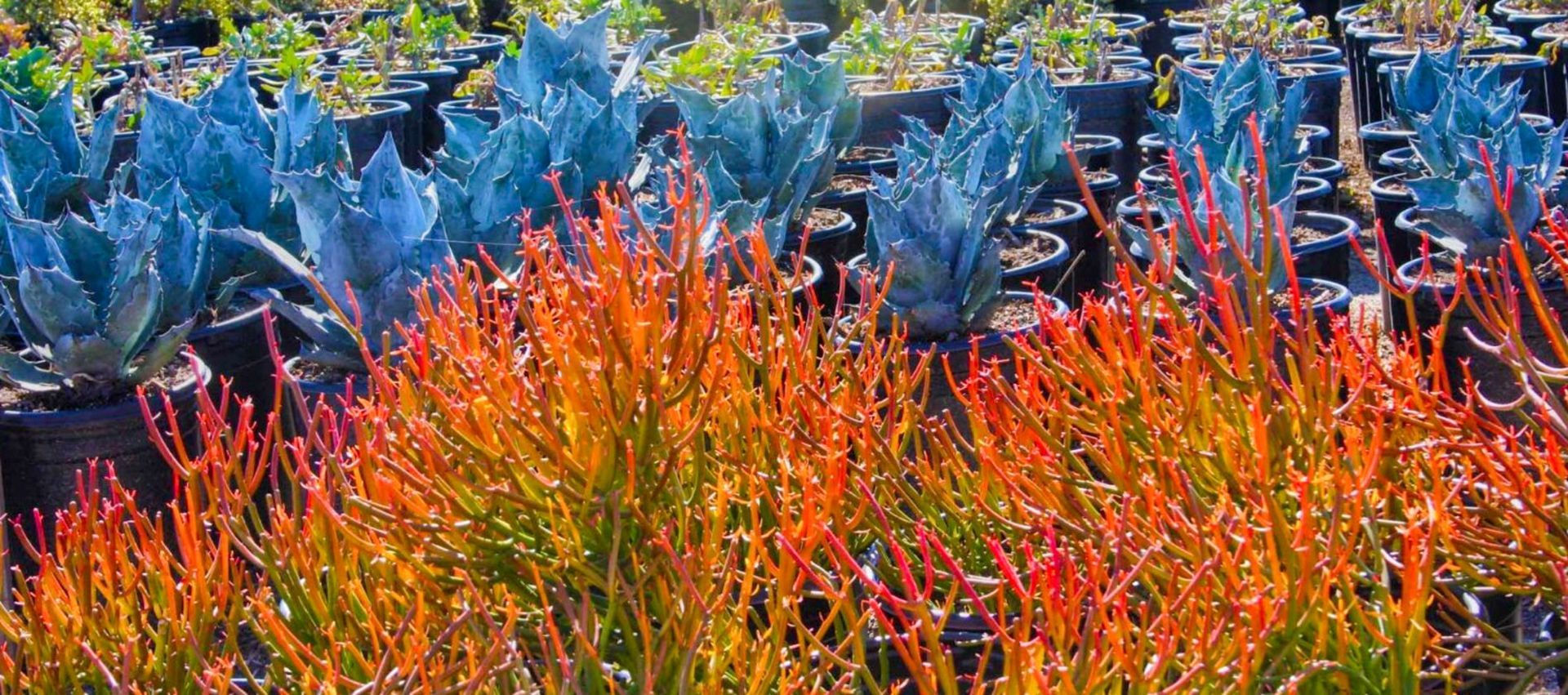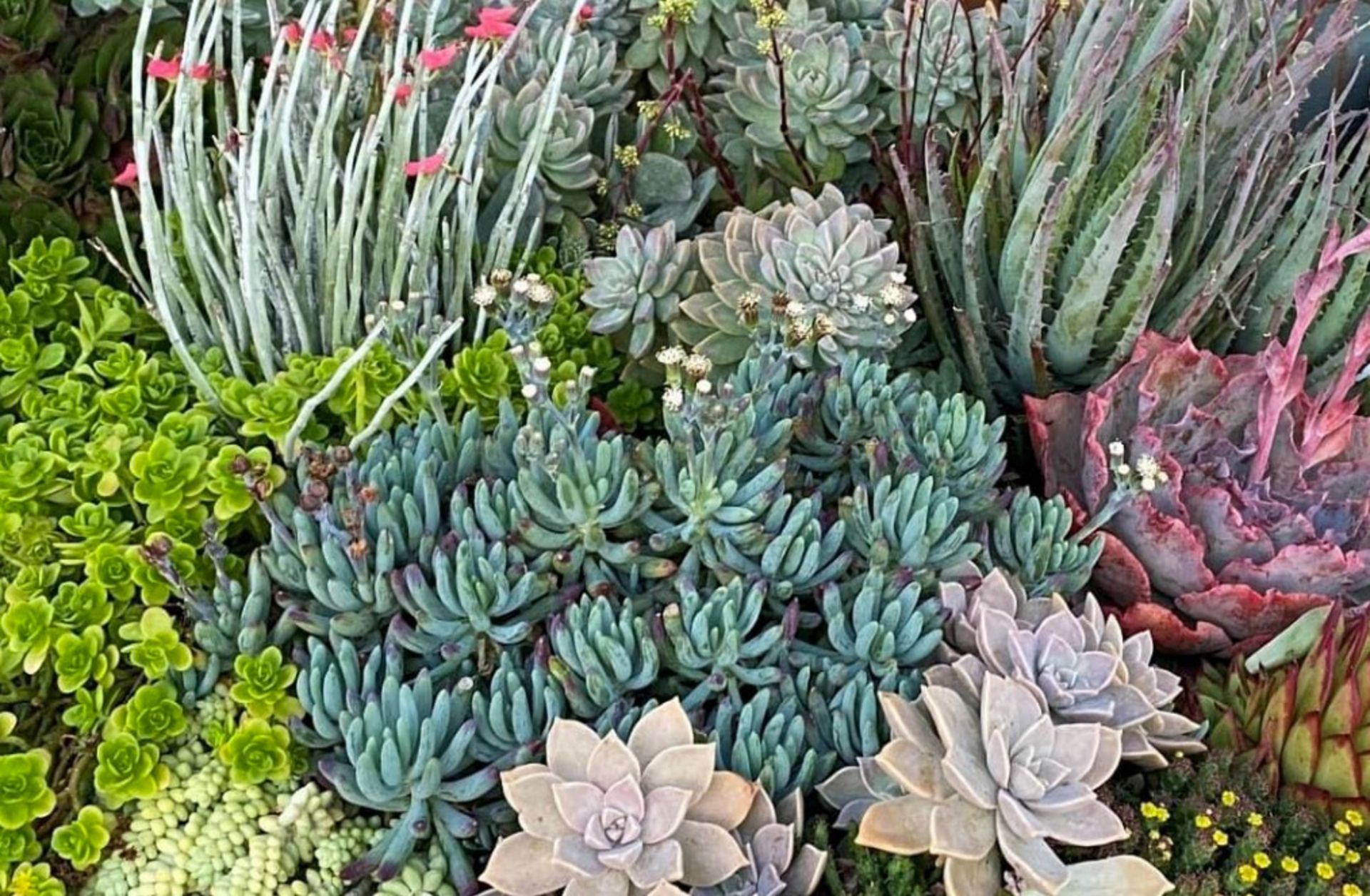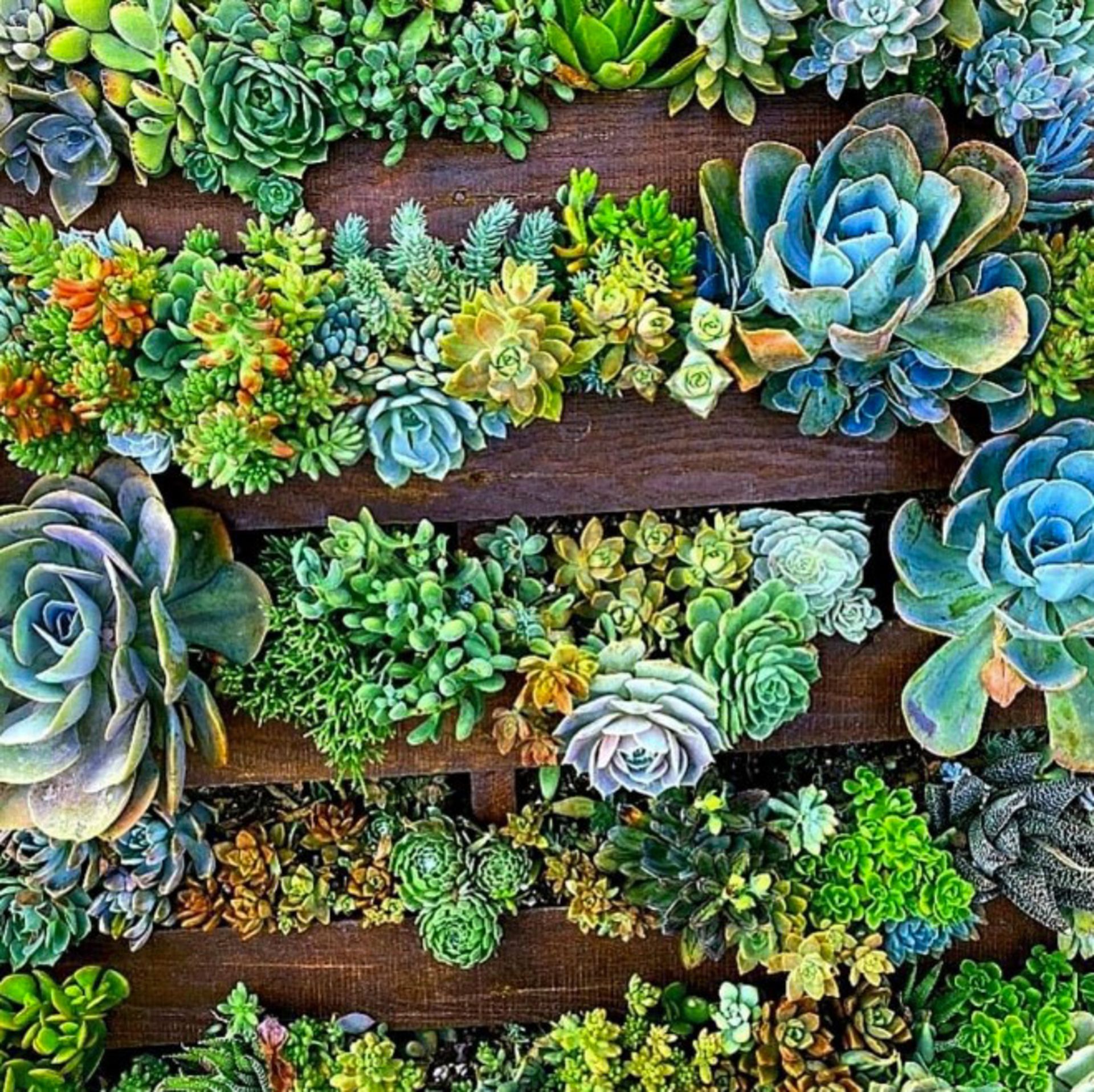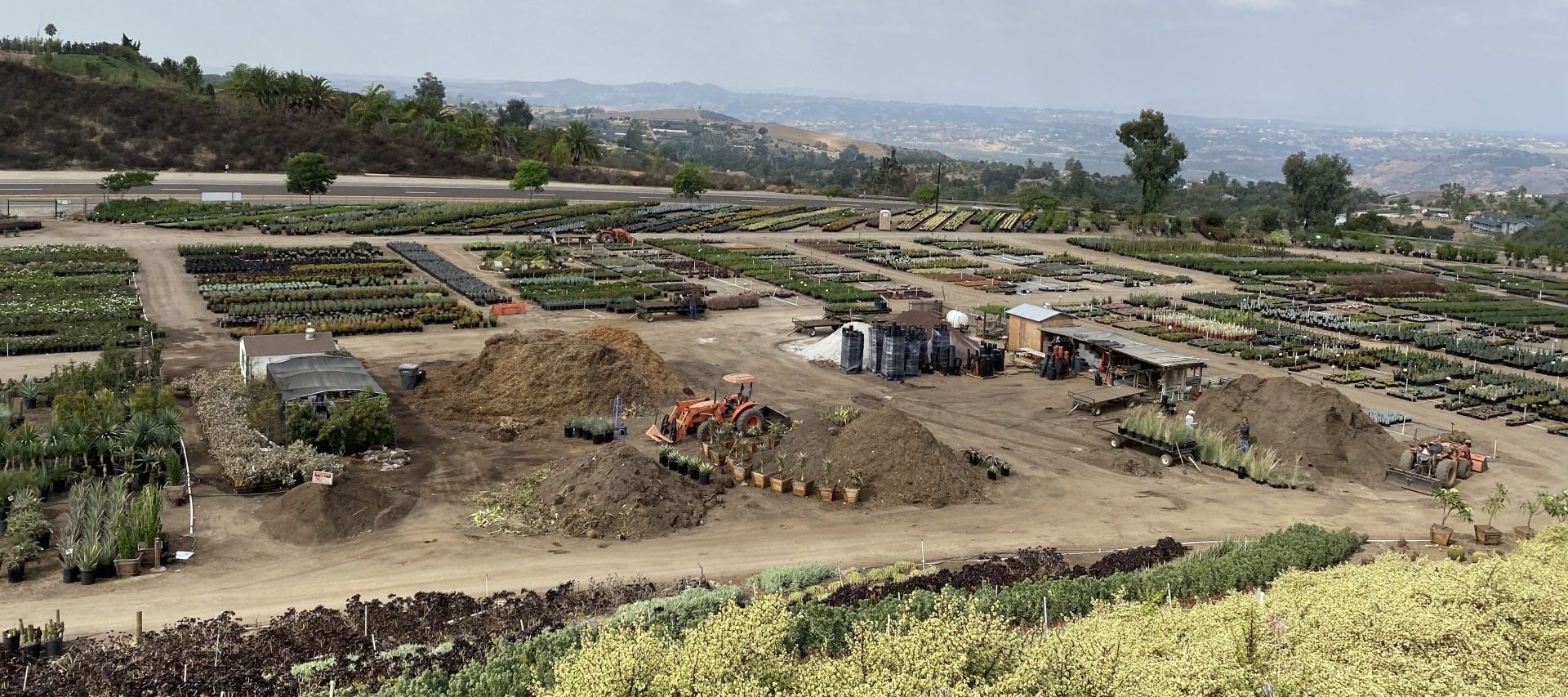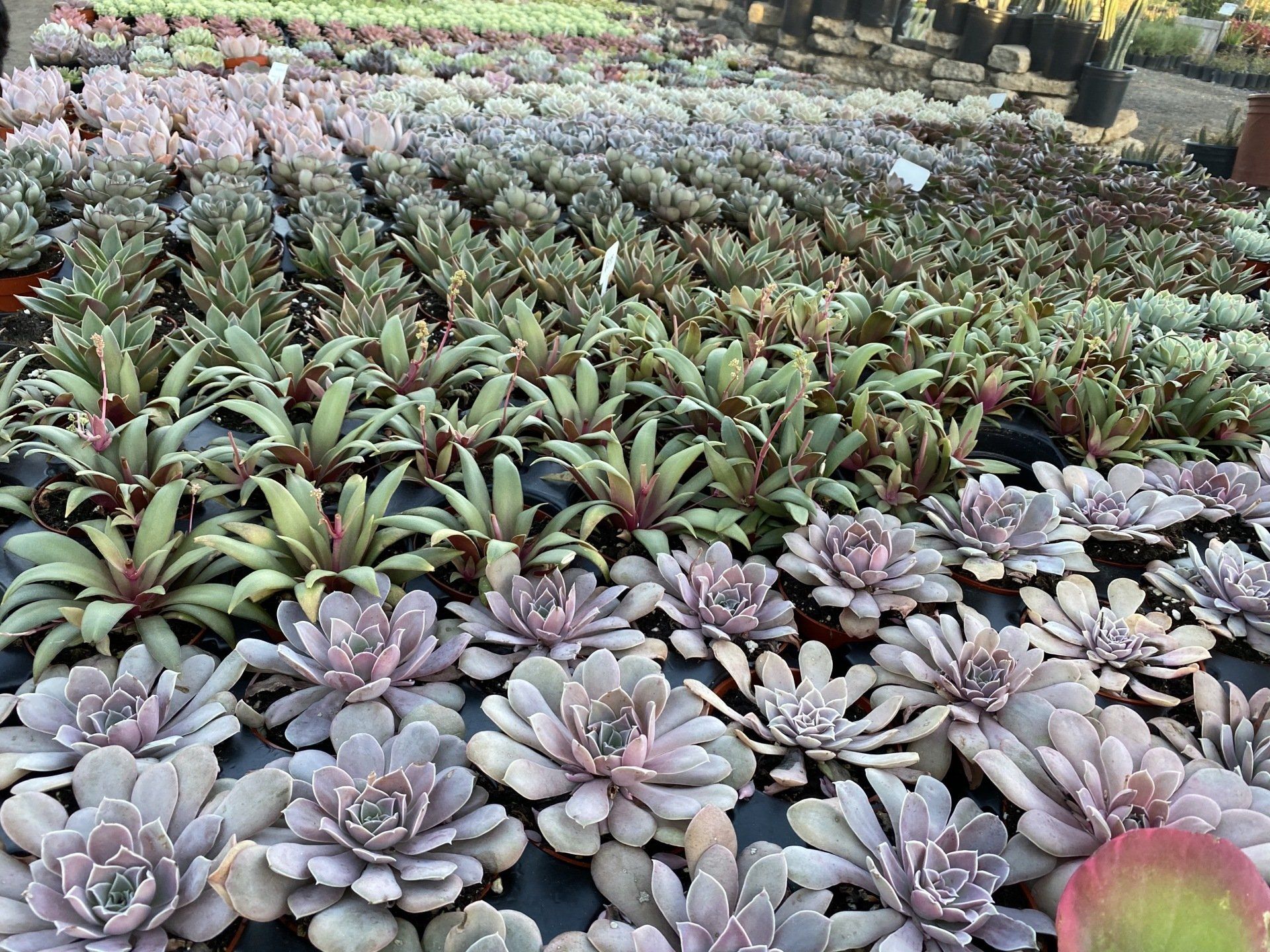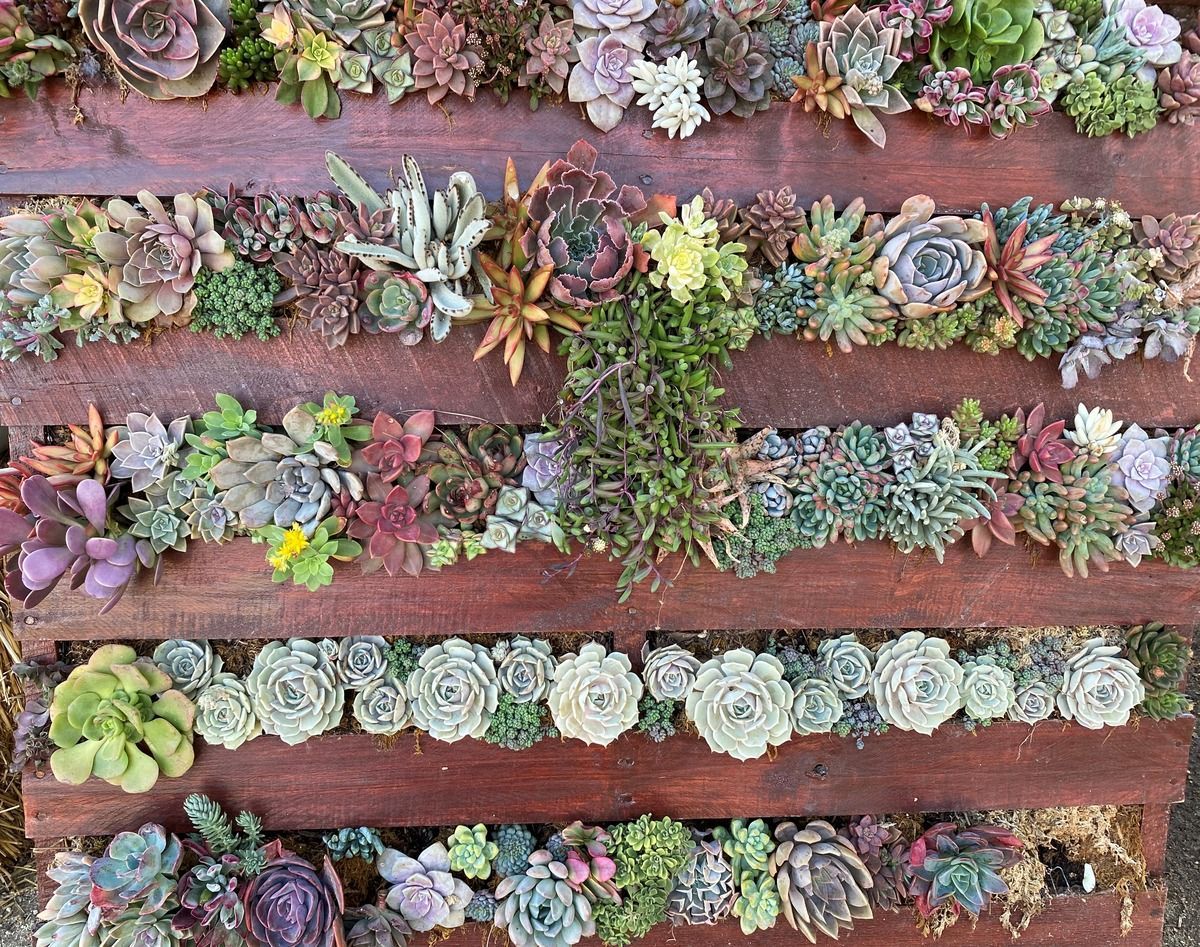San Diego Specialty Plants & Gardens
Open Monday-Saturday 8am-5pm
Sundays 9am-2pm
Waterwise Botanicals is more than a nursery and welcomes both homeowners and the landscape trade industry. We are always striving to assure convenience and confidence as we continue to offer quality and diversity of plant material. We have acres of beautiful nursery and growing grounds, including demonstration gardens, ponds, and a shade house full of creative treasures to inspire you.
We invite you to come and explore our location out in the country away from the stresses of daily life. We like to describe ourselves as having a touch of “rustic elegance”. Take time out to sit in our gazebo in the Cottage Garden, or bring a snack or lunch to enjoy at our picnic tables near our ponds.

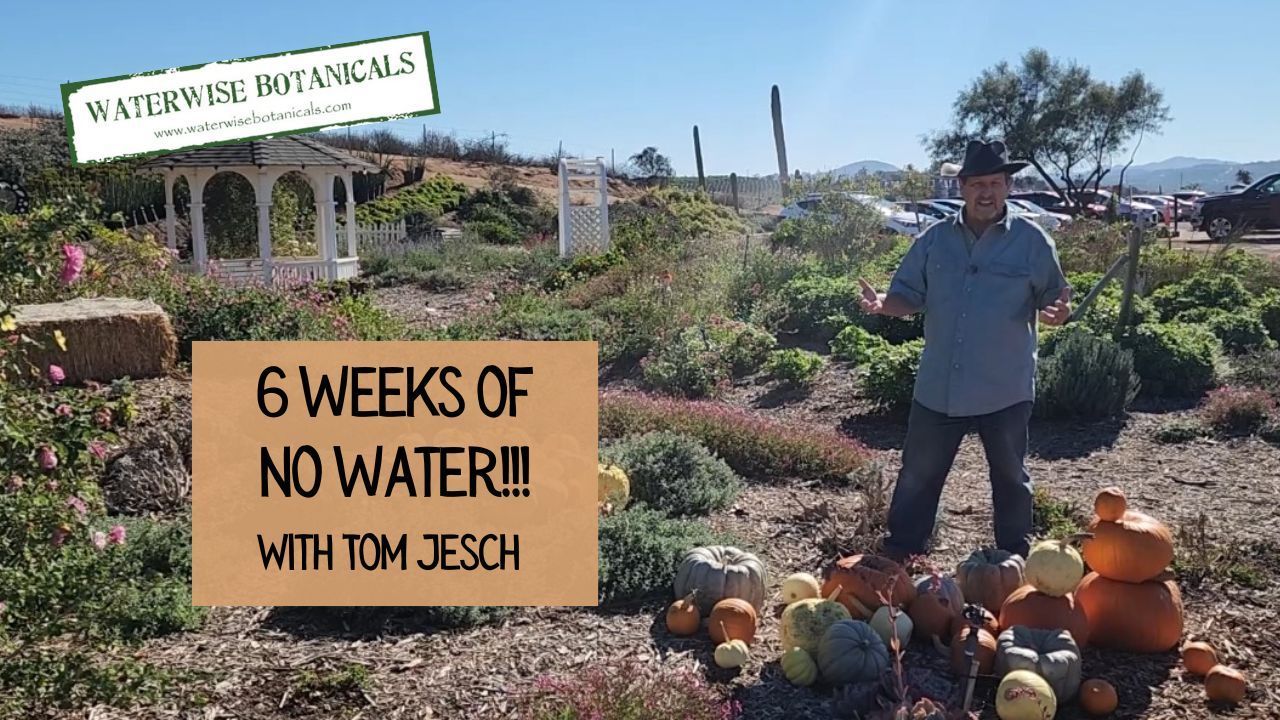
A Plant Nursery & Nature Experience
It’s been said, we are a “Plant Lover’s Paradise”, so as you wander our growing grounds under the beautiful skies, in the hills of North County San Diego, discover the intriguing beauty of our drought tolerant selections and much more… Enjoy the diversity of succulents, or the structure and dynamic impact of cacti. Walk through row upon row of romantic roses and see the dance of ornamental grasses in the breeze. Delight in the grace of colorful perennials, and explore our shade house, a wonderland of fun, gifts and temptations.
Waterwise Botanicals is a place to dream and adventure… wear your comfy, but sturdy shoes and bring a camera to capture the ambiance of our unique nursery, rich in wildlife and nature. You are likely to see birds, and lizards, along with fish and frogs in our ponds. Occasionally, a turtle or two will climb out on a log to sun bathe. We are a working, growing, evolving nursery, so you will observe workers in the fields, or tractors loading plants and mixing soil, making your visit much like the fun of a field trip!


